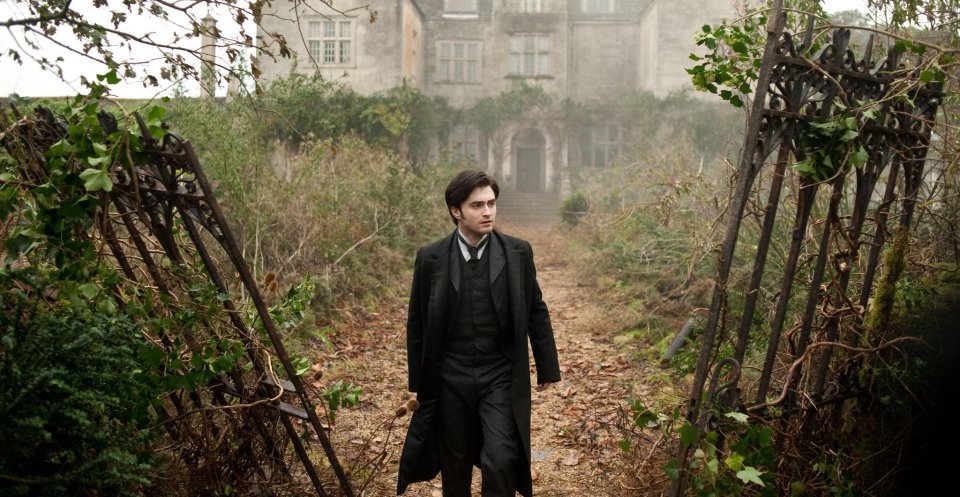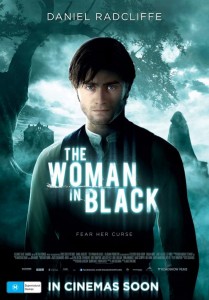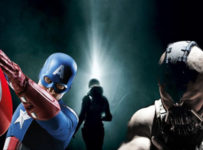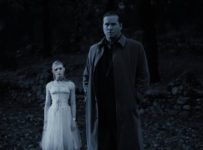Hammer’s house of horror triumphantly returns to classic Gothic horror, succeeding by simply doing what they mastered decades ago.
[stextbox id=”grey” caption=”The Woman in Black (2012)” float=”true” align=”right” width=”200″]
Director: James Watkins
Writer(s): Jane Goldman
Runtime: 95 minutes
Starring: Daniel Radcliffe, Ciarán Hinds, Janet McTeer
Distributor: Roadshow
Rating (?): Better Than Average Bear
[/stextbox]
Founded in the 1930s, Hammer Film Productions became infamous for their run of horror films that began in the 1950s through to the 1970s, when changing audience tastes sent the studio into effective hibernation. The shift away from Gothic horror came with the rise of the more graphic violence of Night of the Living Dead (1968), the psychological terror of Rosemary’s Baby and the moral bending films of Wes Craven. Unsure of how to respond to this, the studio floundered. However, the last few years have seen something of a revival for the studio, who co-produced the successful Let Me In (2008), itself a remake of the Sweden’s new breed of horror, Let the Right One In. With The Woman in Black, Hammer finally returns to its roots.
During the Edwardian era, Arthur Kipps (Daniel Radcliffe) lives with his four-year-old son and his nanny, following the death of his wife during childbirth. Plagued with visions and financial problems, he takes an assignment to take care of the remote estate of Alice Drablow. When he arrives, the locals are less than welcoming, and a strange pall hangs over the village. Befriended by the wealthy Sam Daily (Ciarán Hinds) and his wife Elizabeth (Janet McTeer), Arthur soon discovers that the strange house he is investigating may not be as abandoned as he first thought.
Based on the 1983 novel by Susan Hill, The Woman in Black has been one of the longest running plays on London’s West End, second only to Agatha Christie’s The Mousetrap. This is perhaps indicative of the simple fascination audiences have in unravelling a mystery, and with this film Hammer, together with Alliance Films, demonstrate that they gotit right back in the 1970s: the world just needed to come full circle again. Helping them bridge the gap for modern audiences is Eden Lake helmer James Watkins, and geek favourite Jane Goldman, who penned the adaptation. Eschewing the hyperkinetic energy she co-wrote into Kick-Ass and X-Men: First Class, Goldman’s script fundamentally understands that with Gothic horror, the pace is the trick.
The Woman in Black is noticeably absent of the gore that changed the game for Hammer back in the 1970s, but instead crafts a chilling landscape filled with darkness in every corner. Cinematographer Tim Maurice-Jones also departs from his singular style of Snatch and Lock, Stock and Two Smoking Barrels to cast a fog over the marshes, finding more spooks in what isn’t seen. When the scares come, and they do, they are all the spookier for the restraint shown earlier in the piece.
Unburdened from the shackles of the Harry Potter franchise, Daniel Radcliffe proves to be a capable leading man, wisely choosing to slightly underplay it, but not to the wooden extents of his more famous wizard counterpart. Bolstered by an excellent supporting cast, The Woman in Black may have a familiar conclusion, but most of the joy (and the scares) are in getting there.
The Woman in Black is released in Australia on 17 May 2012 from Roadshow Films.





